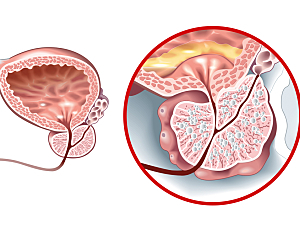Benign prostatic hyperplasia (BPH) has several histopathologic variants, largely described based on the ratio of glandular and stromal components.
Researchers at Brigham and Women’s Hospital wondered whether the stromal‐predominant BPH subtype might negatively affect the outcomes of transurethral resection of the prostate (TURP), since reactive stromal myofibroblasts support a progressive inflammatory response.
However, in the first study of its kind, the team found histopathologic subtype did not predict any postoperative clinical outcome studied. Brittany Berk, MD, resident physician in the Brigham’s Division of Urology, Martin Kathrins, MD, associate surgeon in the Division, and colleagues published the findings in Pathology International.
Methods
The researchers reviewed the records of 105 men who underwent TURP at the Brigham between January 2017 and January 2019:
- 61 (58%) had glandular‐predominant histopathology
- 21 (20%) had stromal‐predominant histopathology
- 23 (22%) had mixed histopathology
The chart review included the original pathology reports and the corresponding slides, which were re-read by one specialized genitourinary pathologist blinded to clinical information.
Preoperative factors (age, use of 5-alpha-reductase inhibitors, history of retention, and presence of median lobe) did not differ significantly among BPH histopathologic subtypes.
Results
In univariate and multivariate analyses, BPH subtype was not significantly associated with any of the primary outcomes:
- Post-void residual urine
- American Urological Association Symptom Score (AUASS) measured three months after surgery
- AUASS measured at six months
- AUASS measured at 12 months
In longer‐term follow‐up (average 1.8 years), there was no significant association between change in AUASS and time since surgery.
Guidance for the Clinic
Identifying histopathologic variants may still be important in determining a patient’s risk of developing clinically significant BPH. However, this study shows no role for preoperative prostate tissue sampling for identifying patients who may have better early outcomes with TURP.
